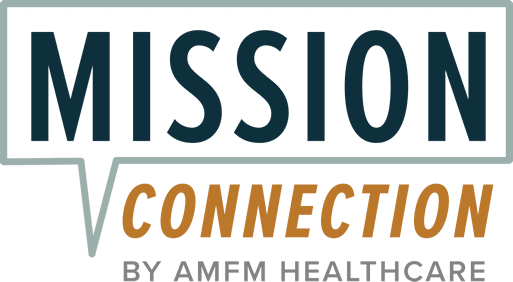DID Co-Occurring Disorders: Coping With Dissociative Identity Disorder & Multiple Mental Health Conditions

The impacts of trauma can be far-reaching; it’s capable of changing how we function physically, emotionally, and even spiritually. In fact, dissociative identity disorder (DID) is a complex and challenging mental health condition that typically arises from severe trauma.
For instance, post-traumatic stress disorder (PTSD) and DID are commonly seen together, with some experts suggesting DID is an extreme form of PTSD.5 People may also experience depression, anxiety, eating disorders, and substance abuse with DID.4
These co-occurrences of mental health conditions can be extremely challenging, causing increased difficulties for those who have them and complicating the treatment process. If you’re concerned about DID co-occurring disorders, a mental health professional can guide you through diagnosis and treatment options.
This page can also help you better understand DID and multiple mental health conditions by exploring:
- What co-occurring disorders are, and examples of DID co-occurring disorders
- How trauma can result in different mental health conditions
- Ways of coping with multiple mental health conditions
- How co-occurring disorders are treated

What Is a Co-Occurrence of Disorders?
Co-occurring conditions are mental health disorders or other health conditions that people have simultaneously. They may also interact with each other, therefore potentially having big impacts on symptoms and treatment.
Often, “co-occurring” refers to having a mental health condition along with a substance use problem at the same time – but it doesn’t always. For example, it may be that someone has both anxiety and depression.1 In situations like this, co-occurring conditions are known as “co-morbid.”
Additionally, many people also have physical health conditions that occur alongside mental health conditions, such as chronic pain. Physical symptoms can arise from the long-term stress of having poor mental health, known as psychosomatic symptoms.1
When people have co-occurring conditions, it’s usually recommended that these conditions be treated simultaneously, not separately. This is because this approach allows for the integration of multiple healthcare professionals who can target the full range of someone’s symptoms.1 As a result, treatment tends to be more effective and improves health outcomes.
However, creating an effective treatment plan for people with co-occurring disorders may be more difficult, as getting a diagnosis can be more complex. For instance, symptoms may overlap and be harder to attribute to separate conditions. Plus, medications for different conditions may not be compatible, so doctors must find drugs that can be taken together safely and treat someone’s symptoms effectively.1
Therefore, it’s important that people with co-occurring conditions receive comprehensive assessments, as their symptoms tend to be more persistent and severe compared to those of people with single disorders.1
With all this information in mind, this article focuses on the mental health conditions that commonly co-occur with dissociative identity disorder. These can include post-traumatic stress disorder (PTSD) and borderline personality disorder (BPD), among others.5 We discuss each of these conditions next.
What Other Disorders Come With DID?
Dissociative identity disorder (DID) is a condition characterized by persistent symptoms of dissociation, amnesia, and multiple alternate identities (known as “alters”). As the most severe type of dissociative disorder, symptoms of DID can be extremely life-altering, causing a great deal of distress for those with it and their loved ones.2
DID is associated with severe trauma and abuse in childhood, which could be physical, emotional, or sexual. When this trauma occurs before the age of five, it can disrupt the normal process of developing an identity, sense of self, and secure attachment to caregivers. For some people, this disruption can cause identity to fragment into multiple alters.2
To help increase understanding of why this happens, dissociation can be understood as a protective mechanism for the brain, shielding itself from the overwhelm that trauma can cause. While it can be temporarily beneficial, dissociating long-term can have significant negative impacts on mental health.3
Plus, as a result of dissociation and trauma, people with DID may have several other mental health symptoms and conditions.4 Some of these conditions include the following.
DID Co-Occurring Disorders:
- Anxiety and panic attacks
- Compulsions
- Sleep disorders
- Suicidal ideation
- Mood swings
- Depression
- Substance use
- Eating disorders
By themselves, each of these issues can be extremely distressing. However, when they’re co-occurring symptoms of DID, the impact can be even more significant.4
As well as symptoms like these, DID commonly co-occurs with PTSD and borderline personality disorder (BPD). In fact, some experts frame DID as an extreme form of PTSD, as it shares many of its characteristics, aside from identity disruption.5
Plus, due to how both conditions share symptoms of dissociation and amnesia, people with DID are commonly misdiagnosed with BPD. However, some experts suggest these two conditions could coexist and belong on a continuum together.5
Lastly, people diagnosed with DID can also exhibit signs of histrionic personality disorder (HPD) and psychotic disorders like schizophrenia, so these could also co-occur.5
Next, we take a look at why certain trauma-related conditions tend to commonly co-occur with DID.
Trauma-Related Mental Health Conditions
Due to its impact on development, early trauma is often a predictor of future mental health conditions, including personality disorders, eating disorders, suicidal ideation, depression, and anxiety.6
In general, traumatic experiences are single or multiple events that cause physical or emotional harm or that are life-threatening. What makes them traumatic is that they have a lasting impact on how someone functions physically, emotionally, socially, and spiritually.7
Additionally, complex trauma describes exposure to multiple traumatic events that are often invasive or interpersonal in nature. For example, repeated abuse or neglect at the hands of caregivers.
Children naturally seek closeness with their caregivers to form an attachment with them. The nature of this attachment can have a strong impact on expectations and behaviors in later life; it forms a child’s understanding of themselves and others. Therefore, complex trauma is closely linked with attachment issues, which can cause difficulties with relationships and someone’s sense of self.8 As a result, there may be substantial impacts on mental health, identity, relationships, and stress responses.6
As well as impacting memory, self-perception, and interpersonal connections, trauma can also alter how someone’s body functions.7 For instance, chronic health conditions are strongly linked to adverse experiences in childhood. Common physical complaints connected to trauma include those around sleep, digestive, and cardiovascular function.9
So, people with psychosomatic symptoms of trauma shouldn’t think It’s all in my head, as there are proven biological processes at work. For example, PTSD is associated with changes to the limbic (emotional nervous) system, increased cortisol levels, and the neurotransmitters involved with stress regulation.9
As there are many emotional and physical outcomes of trauma, how can people cope with these and be treated effectively? We discuss these options next.
Coping With Multiple Mental Health Conditions
Managing a single mental health condition can be extremely challenging – but the presence of multiple co-occurring conditions could make the experience even harder. Before we explore possible treatments, the following are several tips for navigating multiple mental health conditions:
Learn About Your Conditions
Many of us use the internet to better understand different mental health concerns. While it’s good to educate yourself about the topics that relate to your experience, it’s important to get the facts from reliable sources. For instance, you could note down any questions or thoughts and relay them to your doctor or mental health professional at your next appointment.10
If you do go online to learn about your conditions, aim to source information from government resources or reputable practitioners. You could also focus on one small sub-topic at a time. For example, if you wanted to read about “trauma and anxiety” or “DID and intimacy,” do so in bite-sized pieces that don’t overwhelm you.
And finally, you may find a helpful community online for DID recovery support. Many people have DID and co-occurring conditions, so it can be useful to learn about how they’ve coped.
Mapping Your Symptoms
You (and your treatment professional) may benefit from keeping a note of any patterns in your symptoms, thoughts, and behaviors. Doing so can help map out connections between certain triggers and symptoms.10 Additionally, it may help a professional understand the issues that relate to specific mental health conditions, helping with diagnosis. One way of mapping these symptoms is keeping a diary of symptoms or tracking them using a chart.
Self-Care and Compassion
Though “self-care” might seem like a trending buzzword these days (and it should never replace mental health care from professional providers), it can improve mental health. Effective self-care involves improving your sleep, diet, and relationships with yourself and others. Other self-care tips include paying attention to your thoughts and feelings, and showing yourself you are deserving of rest, healthcare, and kindness. In other words, during tough times, it’s as important to have as much compassion for yourself as you would for someone else going through the same experience.11
How Do You Treat Co-Occurring Disorders?
Psychotherapy tends to be the “go-to” option for people with DID. This is because it involves offering empathy, validation, and reassurance for each alter so that their needs are heard in the therapeutic process.12 However, any therapy for DID should be trauma-informed, as a therapist needs to be knowledgeable about the delicate nature of trauma and how to work with someone safely.
Psychodynamic therapy is often employed to unveil trauma and help people tolerate painful memories more easily. For instance, therapists may aim to assist someone in processing what’s happened in the past and integrate it into their present.2
Additionally, therapy for DID usually involves creating a dialogue between alters. This is because alters often continue to exist due to defense mechanisms around pain, distorted thoughts and beliefs, and inner conflicts. So, to render them unnecessary and integrate the pieces of someone’s identity, therapy must provide “solutions” for each alter. This may involve cultivating a sense of safety in the world, self, or relationships.13
Since many will have DID and depression or DID and different anxiety disorders, therapy must also address these. For example, therapy for these DID co-occurring disorders may keep trauma-informed psychodynamic methods at the center, whilst incorporating techniques from cognitive-behavioral therapy (CBT). CBT can be used to explore unhelpful automatic thoughts and behaviors that are worsening someone’s condition.
While co-occurring conditions should be treated simultaneously for the best outcomes, techniques like CBT likely need to be carried out carefully alongside the psychotherapy for DID. This is because people may not yet be ready to be challenged if their DID is unexplored.
While there are no medications for treating DID explicitly, they can be used to manage symptoms like mood swings, depression, and anxiety.2
Mission Connection: Get Support for Co-Occurring Mental Health Conditions
A fragmented sense of identity can be highly distressing for anyone to cope with – including those with it and their loved ones. What’s more, DID co-occurring disorders may mean that someone may have been struggling without mental health support for too long. For this reason, at Mission Connection, our focus is on providing personalized and flexible mental health care to help each person meet their unique needs and goals.
Our licensed therapists offer trauma-informed treatments, as well as therapies for co-morbid conditions like depression and anxiety. They’ll facilitate a safe and careful exploration of what’s happened to you, and help you cultivate mental wellness strategies for long-term recovery.
Whether you want to receive in-person, online, group, or inpatient support, our team can answer any questions and get your treatment started today. Contact us today if you’d like to learn more about your options.

References
- National Institute on Drug Abuse. (2024, April 19). Co-Occurring disorders and health conditions. National Institute on Drug Abuse. https://nida.nih.gov/research-topics/co-occurring-disorders-health-conditions
- Mitra, P., & Jain, A. (2023, May 16). Dissociative Identity Disorder. PubMed; National Library of Medicine. https://www.ncbi.nlm.nih.gov/books/NBK568768/
- Texas A&M University. (2016, December 9). Can you unconsciously forget an experience? ScienceDaily.https://www.sciencedaily.com/releases/2016/12/161209081154.htm
- WebMD Editorial Contributors. (2022, January 22). Dissociative Identity Disorder (Multiple Personality Disorder). WebMD. https://www.webmd.com/mental-health/dissociative-identity-disorder-multiple-personality-disorder
- Bistas, K., & Grewal, R. (2024). Unraveling the Layers: Dissociative Identity Disorder as a Response to Trauma. Cureus, 16(5). https://doi.org/10.7759/cureus.60676
- Baroncelli, C. M. C., Lodder, P., van der Lee, M., & Bachrach, N. (2025). The role of enmeshment and undeveloped self, subjugation and self-sacrifice in childhood trauma and attachment related problems: The relationship with self-concept clarity. Acta Psychologica, 254, 104839. https://doi.org/10.1016/j.actpsy.2025.104839
- Yadav, G., & Gunturu, S. (2024). Trauma-Informed therapy. PubMed; StatPearls Publishing. https://www.ncbi.nlm.nih.gov/books/NBK604200/
- The National Child Traumatic Stress Network. (2018, May 25). Complex trauma. The National Child Traumatic Stress Network. https://www.nctsn.org/what-is-child-trauma/trauma-types/complex-trauma
- SAMHSA. (2014). Understanding the Impact of Trauma. National Library of Medicine; Substance Abuse and Mental Health Services Administration (US). https://www.ncbi.nlm.nih.gov/books/NBK207191/
- National Institute of Mental Health. (n.d.). Taking Control of Your Mental Health: Tips for Talking With Your Health Care Provider. National Institute of Mental Health (NIMH). https://www.nimh.nih.gov/health/publications/tips-for-talking-with-your-health-care-provider
- Vermani, M. (2023, February 22). The Connection Between Self-Care and Mental Health. Psychology Today. https://www.psychologytoday.com/us/blog/a-deeper-wellness/202302/understanding-the-mental-health-and-self-care-connection
- Gentile, J. P., Dillon, K. S., & Gillig, P. M. (2013). Psychotherapy and Pharmacotherapy for Patients with Dissociative Identity Disorder. Innovations in Clinical Neuroscience, 10(2), 22. https://pmc.ncbi.nlm.nih.gov/articles/PMC3615506/
- Şar, V. (2014). The many faces of dissociation: Opportunities for innovative research in psychiatry. Clinical Psychopharmacology and Neuroscience, 12(3), 171–179. https://doi.org/10.9758/cpn.2014.12.3.171
- Chlebowski, S. M., & Gregory, R. J. (2012). Three Cases of Dissociative Identity Disorder and Co-Occurring Borderline Personality Disorder Treated with Dynamic Deconstructive Psychotherapy. American Journal of Psychotherapy, 66(2), 165–180. https://doi.org/10.1176/appi.psychotherapy.2012.66.2.165






